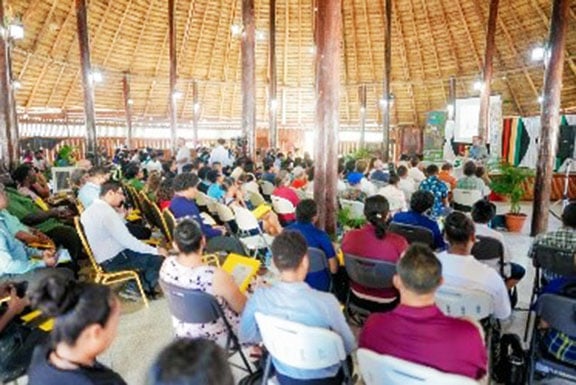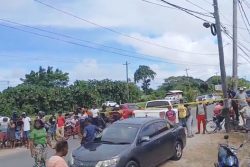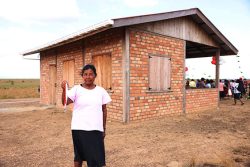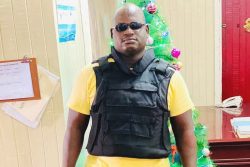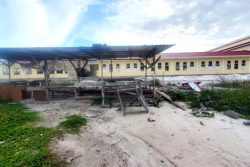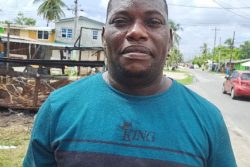A collaborative expedition of scientists has concluded a month-long survey in one of the world’s most remote forests, located in the northern Amazon region of Guyana.
According to a release yesterday from the Protected Areas Commission (PAC), this expedition marks the most comprehensive study of the region’s ecological and biodiversity resources ever performed.
The expedition was a partnership between PAC, the Field Museum of Natural History, and numerous local Guyanese institutions. It brought together 55 experts in geology, botany, zoology, soils, and local ecology, creating a diverse team that conducted a thorough investigation of the region’s ecosystem. The survey forms part of Guyana’s expanded Low Carbon Development Strategy (LCDS) 2030, which integrates forest carbon, watershed management, and biodiversity as priority areas for conservation and sustainable development.
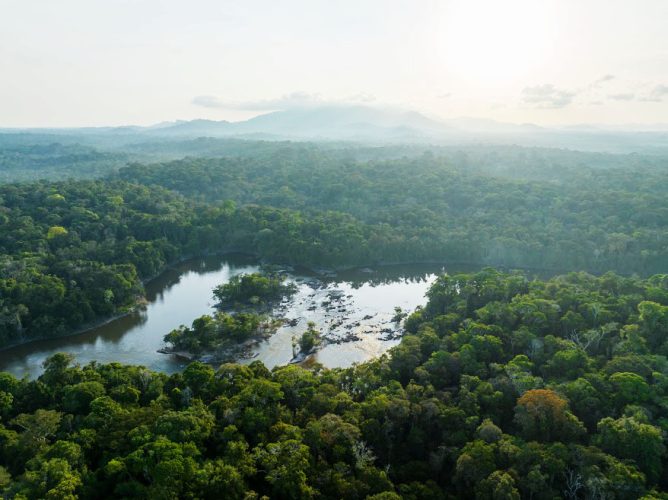
“Guyana is a global hotspot for biodiversity and harbors one of the best-protected tracts of rainforest on Earth,” said expedition leader Dr. Lesley de Souza, Lead Conservation Ecologist at the Field Museum of Natural History in Chicago. “But this area of Guyana has not been scientifically documented. The Amerindian communities know more about these areas than the foreign scientists who come to study the region’s biodiversity. Our goal is to marry these two bodies of knowledge.”
This was the first scientific exploration of the region’s biodiversity in nearly 90 years. The findings are expected to support the government’s strategy to sustain ecosystem services, build climate resilience, and develop conservation models that can be replicated. “Sampling our biodiversity with a combination of cutting-edge research methods, local Amerindian knowledge, and an all-star team of Guyanese and international scientists is yielding insights that we just can’t get any other way,” said Robert Persaud, Foreign Secretary and Chairman of the PAC Board of Directors.
The Protected Areas Commission partnered with the Field Museum of Natural History to conduct the rapid inventory. According to the release, the results will inform the expansion of Guyana’s Protected Area System, with the government aiming to protect 30% of the nation’s terrestrial and marine areas by 2030. This initiative aligns with Guyana’s plans to lead a Global Biodiversity Alliance, focusing on conservation and biodiversity protection under the LCDS 2030.
The area surveyed includes parcels of the world’s largest ecologically undisturbed forests, providing invaluable insights into the function and resilience of forest ecosystems. Nestled in the southern reaches of Guyana, between the Amazon River basin and the Guiana Shield, lies the Acarai-Corentyne Corridor, a remote expanse of lush green forests interwoven with rivers. Few people have ventured into this wilderness, making it a scientific treasure.
The expedition team included 38 Guyanese and 17 international scientists, enabling knowledge exchange across institutions and communities. Participants included representatives from the Environmental Protection Agency (EPA), the University of Guyana (UG), Conservation International-Guyana (CI-Guyana), Frankfurt Zoological Society-Guyana (FZS-Guyana), and local Amerindian villages such as Masakenari, Parabara, and Cashew Island.
Now out of the field, the team is analyzing data and drafting a final report. Preliminary findings were presented yesterday at the Umana Yana. These findings will provide critical information for conservation planning and natural resource management, ensuring the sustainable development of Guyana’s natural heritage the release added.
“This team showcases the next generation of Guyanese biodiversity specialists,” Director of UG’s Center for the Study of Biological Diversity, Dr. Priya Maharaj said. Guyanese team members include Allister Henry (PAC), Ronell Lewis (PAC), Kaslyn Holder-Collins (UG). Devya Hemraj (UG), Annalise Bayney (CI-Guyana), Christopher Bohla (EPA), Nehru Narine (EPA), Alex Stewart (FZS-Guyana), Huichang Yang, Arianne Harris (UG), Asaph Wilson (SRCS), Kwang Suse (Kanashen Amerindian Protected Area), Philip Suse (Kanashen Amerindian Protected Area), Rueben Yamochi (Masakeñarî), and Onesimus Rudolph (Parabara).
